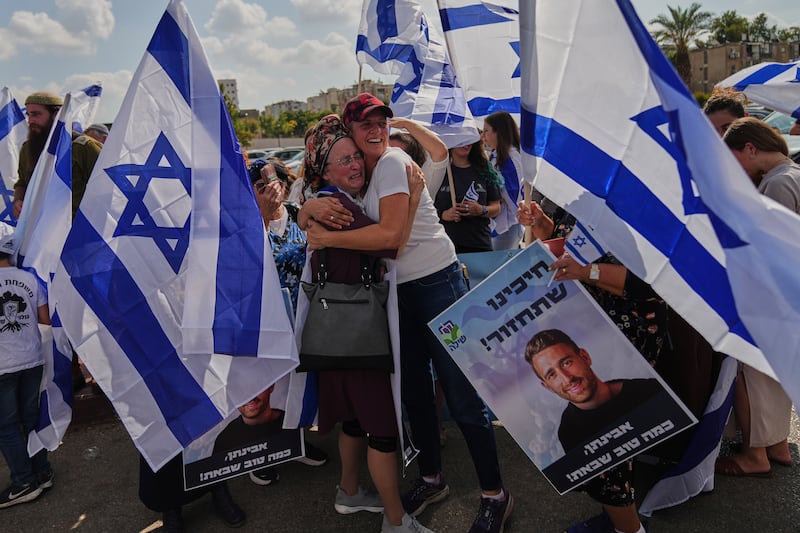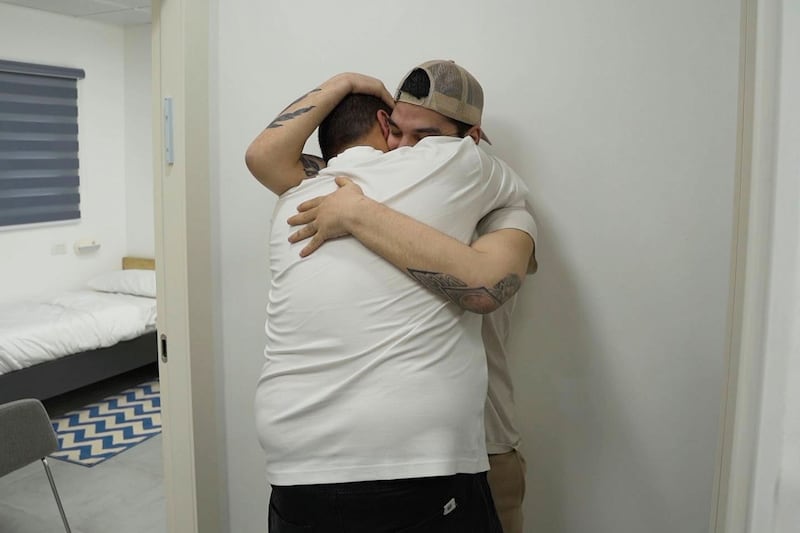There are moments when history seems to stop; when centuries of faith, suffering and endurance collapse into a single gesture. This week, one such moment arrived in Israel amid an extraordinary breakthrough for Middle East peace.
As President Donald Trump traveled to the region to oversee what he called a “historic” peace agreement between Israel and Hamas — a deal that would end two years of war and bring all remaining living hostages home — a more intimate miracle unfolded in a hospital room.
Inside that room, pale and fragile but alive, Yosef-Chaim Ohana — who had been held hostage in Gaza for 738 days — was reunited with his father. His father, kippah on his head, rushed forward, fell upon him, and through tears cried out: Shema Yisrael, Adonai Eloheinu, Adonai Echad — “Hear, O Israel, the Lord is our God, the Lord is One.”
The reunion came as world leaders gathered in Egypt’s Sharm el-Sheikh for a peace summit attended by more than 20 nations, marking what many hoped would be a new chapter for the region.
Trump would later sign the peace agreement alongside the leaders of Egypt, Turkey and Qatar, declaring it “a tremendous day for the world” and adding, “This took 3,000 years to get to this point.”
Yet amid the grand diplomacy and international declarations, it was this father’s cry that captured something essential — not just about peace agreements, but about what we’re fighting to preserve.
It was not staged or ceremonial. It was instinctive, ancient and utterly human; it was a cry of faith that seemed to rise from somewhere deeper than words.
Watching the clip, shared by VIN News, I felt the weight of history in that sound. The father’s voice carried both agony and awe. It was as if all of Jewish history — its losses and its perseverance — spoke through him in that instant.
For Jews, the Shema is far more than a prayer. It is the heartbeat of identity. It is the first verse a child learns and often the last words whispered before death. It affirms both the unity of God and the unity of the Jewish people.
To cry out Shema Yisrael at the moment of reunion is to declare that faith has survived captivity, that the covenant between God and Israel still holds. The Talmud teaches, “Even if a sharp sword rests upon a person’s neck, he should not prevent himself from praying.” That faith — unyielding even in terror — was alive in that hospital room.
The scene revealed what Israel’s struggle has always been about.
Hamas did not merely take hostages; it desecrated the idea of human life. It used terror as theology, building tunnels beneath schools and hiding behind civilians.
Israel’s determination to bring its people home — every one of them — is not political theater; it is moral conviction. As the peace deal’s implementation began, with Hamas releasing all 20 living hostages and Israel freeing nearly 2,000 Palestinian prisoners, Ohana’s reunion became a symbol of what this conflict ultimately concerns: whether life or death will define us.

I have spent much of my life studying faith and public life, but this moment reminded me that theology is sometimes spoken best not from pulpits or books, but in cries like this. That father didn’t have to articulate a creed; he embodied it. His prayer was both a thank-you to God and an act of defiance against despair. It proclaimed that love is stronger than captivity and that faith can still rise in a world intent on breaking it.
Rabbi Joseph B. Soloveitchik taught that Jews are bound by two distinct covenants — the covenant of fate, which links us through shared history and suffering, and the covenant of destiny, through which we actively choose our spiritual mission.
That is exactly what I saw in that embrace. The father chose covenant over chaos. He chose gratitude over grief. And he did so through the Shema, the same prayer whispered by countless Jews in exile, on battlefields, and at the gates of death.
The Shema is simple and inexhaustible. “Hear, O Israel, the Lord is our God, the Lord is One.” It proclaims that reality, however shattered, is not random; that beneath the noise there is order, meaning and moral coherence.
The verse that follows — “You shall love the Lord your God with all your heart, with all your soul, and with all your might”— is not resignation but renewal. It commands us to love and to live even when life itself has been threatened.
As Rabbi Jonathan Sacks wrote, faith represents our ability to find meaning even in suffering. That father’s cry was precisely that: a declaration that love and life remain possible even after all reason to hope is gone.
This moment, though deeply Jewish, speaks to something universal. As Pakistan’s prime minister noted at the peace summit, calling Trump “genuinely a man of peace,” the day represented “one of the greatest days in contemporary history.”
Every faith holds its own version of the Shema — a line that gathers courage from chaos. Thy will be done. God is great. Into your hands I commit my spirit. Each affirms that even amid suffering, there is meaning; that beyond fear, there is fidelity. The Shema is the Jewish form of that truth: A people saying, even after atrocity, we still believe.
In our time, when cynicism often masquerades as sophistication and belief is treated as naïveté, this father’s cry broke through the static. It reminded us that prayer is not weakness, it is resistance. The Shema is not an escape from reality but a way of sanctifying it. It does not deny suffering; it redeems it. It does not erase fear; it orders it toward love.
I keep thinking about the stillness that followed. The camera shook, people wept and for a moment the noise of the world fell silent. There was no ideology, no debate; only faith meeting flesh. It was as if centuries of exile, pogrom and resilience condensed into that one hug.
The Shema has been spoken for 3,000 years — by prophets and shepherds, by exiles and survivors. It was whispered in the Warsaw Ghetto, murmured in Siberia, sung softly in refugee camps and synagogues rebuilt from ash. And now, again, in an Israeli hospital — as world leaders signed peace agreements and diplomats spoke of new beginnings — a father reclaimed his son from darkness and spoke it once more.
That cry — Shema Yisrael — was not only for one son, but also for all who believe that faith can outlast fear. It was the sound of a people remembering who they are and a reminder to the world that the sacred is not extinct.
In a week that saw both grand diplomacy and intimate reunions, both peace declarations signed by world leaders and families embracing after years of separation, that father’s voice called us back to what endures: to covenant over chaos, to gratitude over grief, to faith that still dares to speak in a world of noise.
For a moment, everything else fell away. And all that remained was love.


